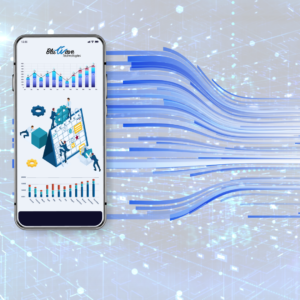Where does Data come from?
Where does data come from? We have a general consensus that much of the data we see comes from the plant floor. Many systems working together for the common goal to give you insight. But most commonly, we overlook where that data is coming from, who is validating the information and how it gets into the KPIs we make decisions from. If you haven’t gotten as far as filtering data into KPIs yet, do not worry, you’re not alone. Actually, the majority of manufacturing management is not making decisions based on KPIs.
Let’s back up a little.. How does data get into our hands and where does it actually come from? The plant floor collects data points continuously and from all departments through various systems. Examples of these could be paper documents, digital forms, hardware or other production systems that automatically collect data. Data is continually floating to the front office with little to no context or validation from supervisors or management. Data is messy when it comes from the plant floor and can take some time to become the high-quality data we make decisions from. That’s why you need accurate data collection systems to collect, verify and distribute key information.
Let’s break down the common types of systems that typically collect information, how the data is collected and how reliable this information is when it gets to the decision-makers.
- Paper
- Most common approach
- Can be customized to any process
- Requires heavy, manual workload to collect, manage and distribute information
- Can be misplaced
- Does not minimize human error
- Excel/ Word Documents
- A step up from paper
- Manual workloads to get data to different roles
- Does not have visibility for the right people at all times
- Does not minimize human error
- Does calculations and other functions to create results
- Digital Forms
- Newer age data collection
- Can be customized to processes
- Typically included parameters to limit human error
- Can be alerted on deviations
- Customizable to any process
- Limited manual data entry
- Hardware and Sensors
- Can not be customized to any process
- Collects information automatically
- Reports to a local database
- Does not include automated calculations or reports
- Can trigger alerts if needed (in some cases)
We can obviously see that paper and excel systems are laggard methods of data collection, but there is no one single, best way that data should be collected. The best approach is a hybrid approach that includes digital data collection, paired with automated hardware data collection. This allows production to customize forms to collect CCP information or other quality information that can be collected and verified by the right personnel, while the hardware systems can collect pertinent machine or equipment information automatically.
After learning about each of these data collection methods, then how do we take this information and make it useful? How do we take it from static data to something that is dynamic and useful? Well first, we’ve got to understand that not all data is useful. This may be contrary to some belief, but most of the data that is coming from the plant floor may not be useful to your role, so we’ve got to be able to filter out this information to get exactly what we want without having to do the manual process ourselves.
First and foremost, only Measure what You Treasure. This is a tried and true expression that helps lead all organizations. Filtering information can be difficult with paper or excel systems that have limited functionality, but advanced digital systems such as BluWave Forms and Reports can receive many information inputs in order to output high-quality, filtered information based on your role. This is where you see vast time savings, efficiency increases and insight to operations performance you may have lacked before. This is the type of system that helps you continuously improve your insight, decision-making, production processes and ultimately, your data culture.
Every insight and KPI starts with data collection. Whether you are pulling that from software, hardware or excel, all data must be vetted and distributed properly to be useful. So, the main priority is to find the most effective way to collect this key information and get it into a system that validates its quality and accuracy. If you are struggling to get data from the plant floor into your view, there are a few ways you can change that. First, find what data is most crucial to your role and what you expect to be crucial data in the future. Then, evaluate your current data collection systems and their reliability of being accurate. Finally, take the step to change your systems if it is needed. In the 21st century, there is no need for a lack of context or data; there is plenty of it and many ways to ensure its quality and delivery.
If you would like to learn more about how BluWave Forms and Reports are improving real-time data collection, review and reporting methods, inquire here for a short, live demonstration with your team to see if it fits in your production environment. Not only does BluWave conform to your processes, but can also extract and validate data from other systems before reporting directly to you in the form of KPIs or recurring email reports based on your exact role. Get data and get digital today!
